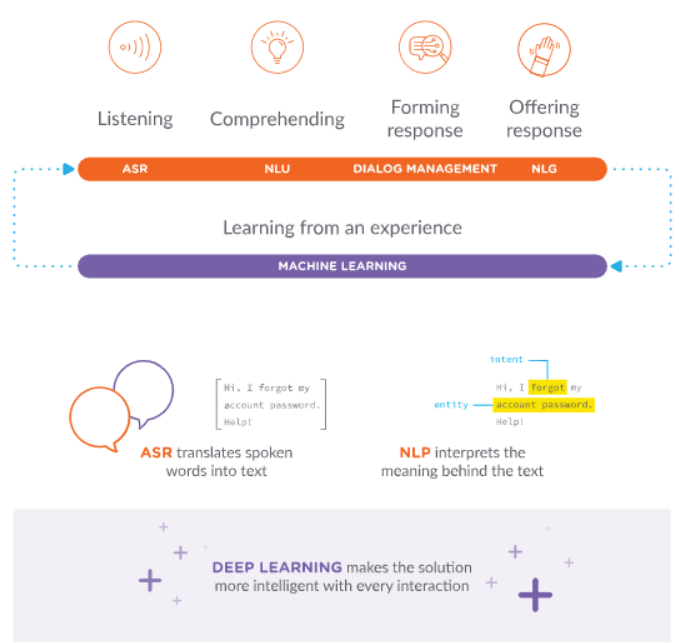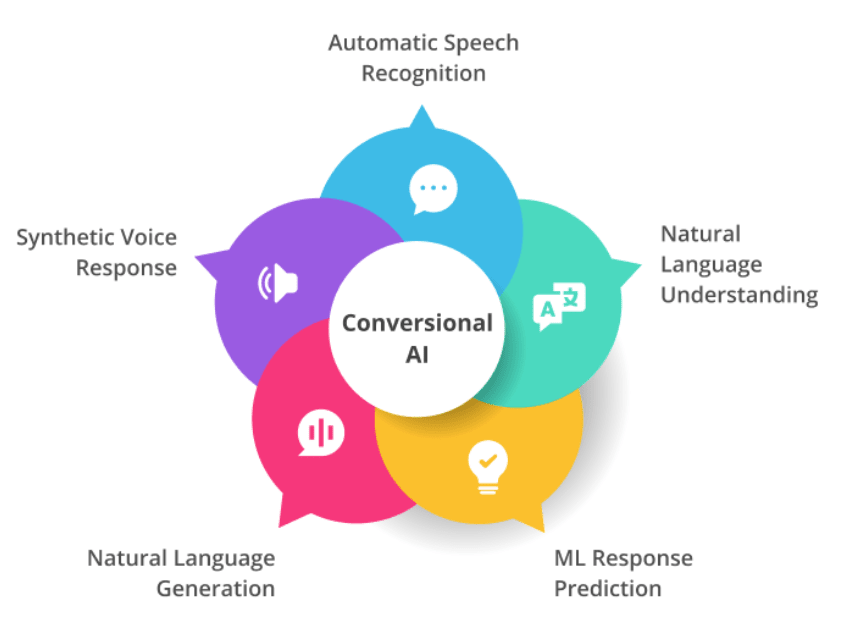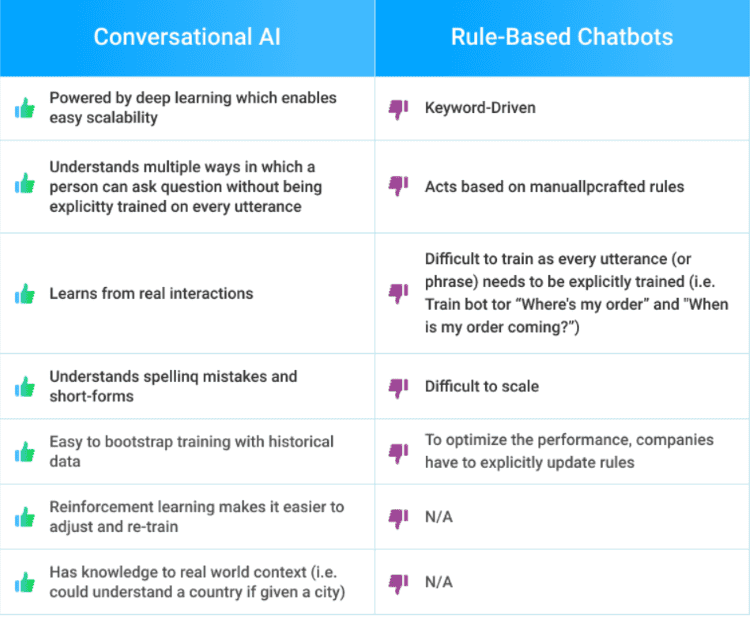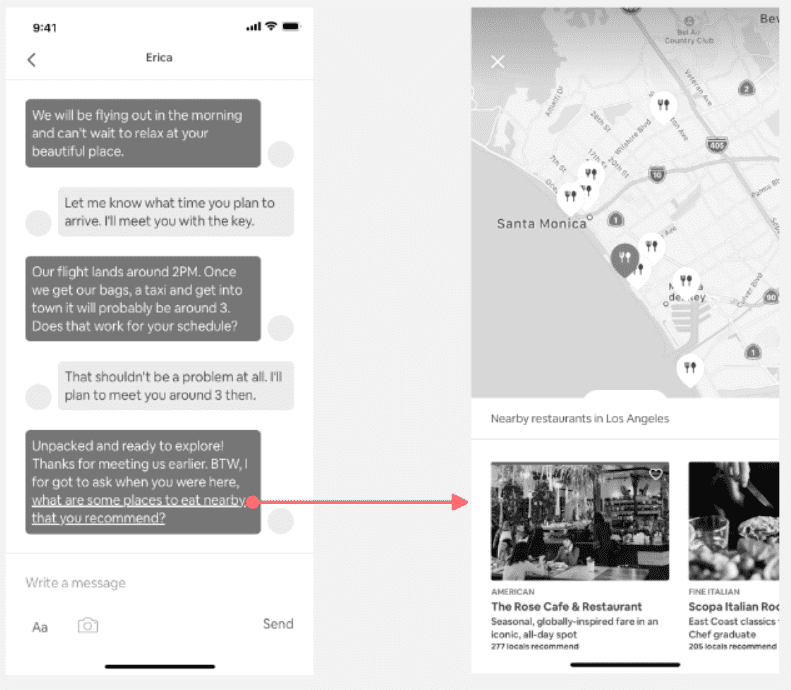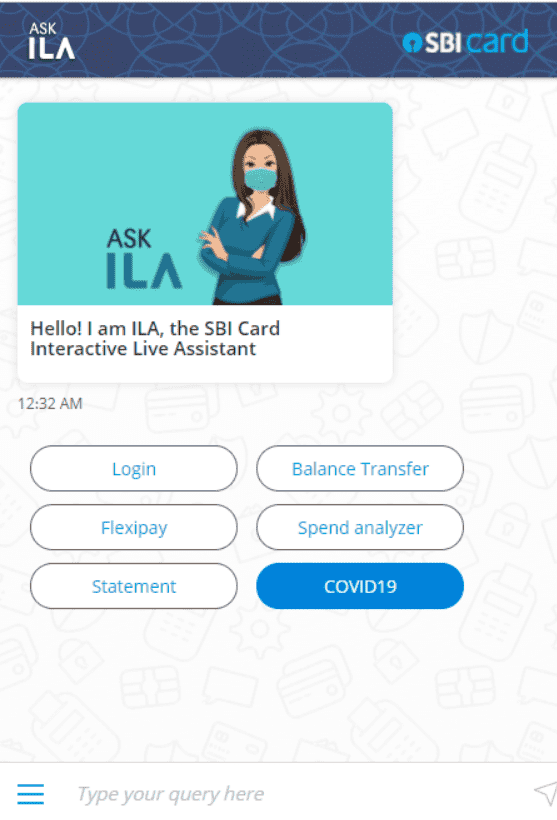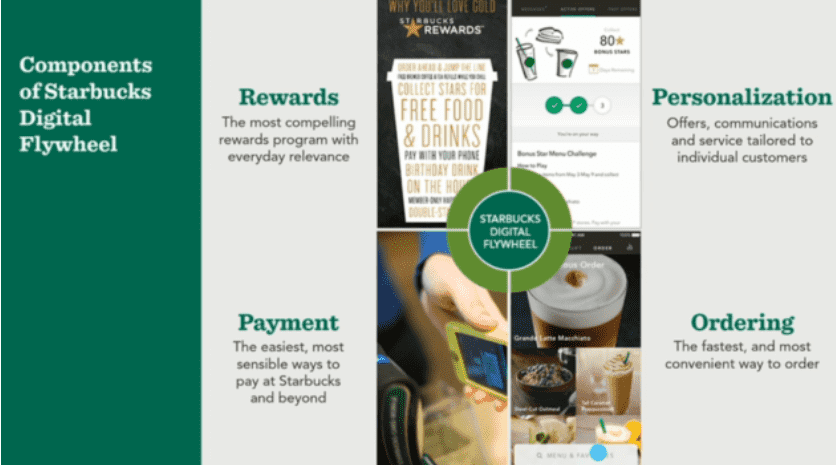With the world fostering digital advancement, conversational AI is bound to gain more recognition by businesses to use it and enhance customer communication.
In fact, the global conversational AI market size is estimated to grow at a CAGR of 21.9% in the next three years.
Similarly, the adoption of conversational artificial intelligence is being driven by a dual mandate — while brands need new ways to carve a larger share of the highly competitive marketplace, they also want to cater to customer needs.
For that reason, conversational AI use cases hold the key to achieving both objectives.
A conversational chatbot can change every aspect of when, where, and how brands engage with people. Deploying it offers a whole new category of capabilities that business leaders need to consider when they serve their customers and stakeholders.
Conversational AI can be best understood when you know its various elements and implementations, which are divided into different sections.
- What is a Conversational AI Platform?
- How Does Conversational AI Function?
- Key Components of Conversational Artificial Intelligence
- Conversational AI vs Rule-based Chatbots
- How to Make Your Chatbot More Conversational?
- Practical Applications of Conversational AI
What is Conversational AI Platform?
Conversational AI is defined as the convergence of different technologies that users typically use to interact. It’s been designed to be predictive and personal for more complex, fluid responses and those that lack a predefined scope.
Compared to rule-based chatbots, conversational artificial intelligence can enable human-like interactions and a less constrained user experience. In fact, conversational chatbots empower businesses to deliver the best of both worlds – personalized engagements and support at scale.
The goals of conversational AI are to understand users better, take more effective action with fewer steps, and feel natural to work with.
Main objectives of AI-driven technology
- Observe user-specific traits such as location, gender, etc.
- Remember the available existing data like CRM databases and past conversations.
- Ensure reinforcement learning via patterns in past conversations with each user.
- Take complex action by integrating into business operations tools like Business Process Management Software (BPMS).
How Does Conversational AI Function?
Conversational AI is capable to understand, react and learn from every interaction. To achieve the goals, it uses various technologies such as Automatic Speech Recognition (ASR), Natural Language Processing (NLP), Advanced Dialog Management, Predictive Analytics, Machine Learning (ML).
How does conversation AI work?
- It starts working when the AI application receives the information input from the users (either written text or spoken phrases).
- Then the Automated Speech Recognition (ASR) technology helps to listen to the spoken inputs, senses and translates them into a machine-readable format, text.
- Then the AI application has to decipher what the input text means. Natural Language Understanding (NLU) helps to understand the intent behind the text.
- It then forms the response based on its understanding of the text’s intent using Dialog Management.
- The dialog management manages the responses and converts them into a human-understandable format using Natural Language Generation (NLG).
- After that, conversational AI application either delivers the response in text, or text to speech.
- Finally, the components are responsible for learning and improving the application over time. It is known as Reinforced learning, where the application learns from the experience to deliver a better response in future interactions.
Key Components of Conversational Artificial Intelligence
Conversational artificial intelligence combines natural language processing (NLP) with machine learning. It uses key components to understand the context of what users say and interact with them most intuitively.
- Machine Learning (ML) – It comprises a set of algorithms, features, and data sets that helps to learn how to better respond to the user by analyzing human agent responses
- Natural Language Processing (NLP) – It gives the ability to “read” or parse human language text – a prerequisite for understanding natural sentence structures versus simple keyword “triggers”.
- Integrations – It allows the systems to execute end-to-end action via Application Programming Interfaces (APIs) and other business operations tools. These features permit more autonomous actions.
Conversational AI vs Rule-based Chatbots
The difference between rule-based chatbots and AI-based bots is quite significant.
Rule-based chatbots
Rule-based chatbots also referred to as decision-tree bots, use a series of defined rules. These rules are the basis for the types of problems the chatbot can be familiar with and deliver solutions for. Like a flowchart, rule-based chatbots map out conversations.
Conversational AI bots
AI chatbots combine the power of machine learning and NLP to understand the context and intent of a question before formulating a response. These chatbots generate their own answers to more complicated questions using natural-language responses. The more you use and train these bots, the more they learn and the better they operate with the user.
The below chart enlists the significant difference between conversational bots and rule-based chatbots.
Why does conversational chatbot win?
- The most significant advantage that conversational AI has over rule-based bots is the identification of user contexts and intentions. They can thus decipher a user’s query and deliver a personalized experience.
- The key differentiators of conversational artificial intelligence chatbots are — Natural Language Processing (NLP), Contextual Awareness, Intent Understanding, Integration, Scalability, and Consistency.
How to Make Your Chatbot More Conversational?
A conversational AI platform helps you access user-friendly conversation design, bot-building tools, reusable components, and templates to create all types of best AI bots, irrespective of the business use case.
Here are some tips and best practices to guide towards making a conversational chatbot.
Prepare scripts for transactional queries
A chatbot script is a scenario used to define conversational messages as a response to a user’s query. Transactional queries require a script as the bot has to follow a specific conversational flow to gather the details needed to provide specific information.
The script will vary depending on the chatbot’s goals and the buyer’s journey. While writing a script, certain tips are to be followed, like stay focused on the chatbot’s goals, keep messages short, and simple.
Build an intuitive interface
Irrespective of the goal of your conversational AI chatbot, you have to ensure that your users easily understand it. It means that every bot response must be clear and free of any ambiguity that could lead to misinterpretation.
In addition to an unambiguous script, keep your bot’s answers as short as possible to avoid users getting distracted. A good way to make a conversational chatbot is to break the dialogue by dividing your messages into smaller chunks.
Customize your bot personality
Personality is the flavor of your bot. Indeed, you have to define what kind of personality you want your conversational chatbot to have to determine its tone of voice, what kind of language it will use, and its communication style to align with your brand messaging.
Some best practices to follow are – you can give the bot a name & avatar that gives a human touch while interacting with users. You can enable chatbot triggers with customized messages based on your business needs.
6 Practical Applications of Conversational AI for Customer Engagement
The integrating of conversational artificial intelligence across automated customer-facing touchpoints can reduce the need for switching pages or avoid the need for a heavily click-driven approach to interaction. Instead of performing multiple actions and browsing through loads of irrelevant information, customers can simply ask an AI-enabled bot to find what they need.
There are different practical benefits of a conversational AI chatbot for improving customer experience (CX).
1. Higher customer satisfaction
More than 50% of Facebook Messenger users prefer to shop with businesses that use chat apps.
With customers finding conversational AI bots more friendly and easy to use, the time is right for companies to stay prepared to providing real-time information to the end-users. As chatbots can be accessed more readily than live support, this can help customers engage more quickly with brands.
The best part, the quick support helps customers avoid long wait times, which therefore leads to improvements in the overall customer experience. And when customer satisfaction grows, companies will see its impact reflected in the enhanced customer loyalty and additional revenue from referrals.
Airbnb for example uses conversational AI to automatically classify guest messages to better understand the intent. It helps them to shorten the response time for guests and reduce the overall workload required for hosts. For that reason, Airbnb is also able to provide essential guidance and thus a seamless communication experience for both guests and hosts.
Here are some tips to increase customer satisfaction with conversational chatbots.
- Conversational AI solutions can be deployed across all touchpoints to create a seamless omnichannel customer experience.
- The deployment of conversational bots can prove very helpful as they are capable of tracking purchase patterns and monitoring customer data to ensure the best personal support in real-time.
2. Reduce customer support tickets
80% of new enterprise releases are set to make big use of chatbots for conversational, AI-rich apps.
This clearly shows how businesses continue to see lower customer care costs as a high-impact benefit and how they envision leveraging technology to keep customer care expenditures in check.
This is where AI chatbots can prove the real differentiator as they can ensure great support with minimum cost.
Conversational chatbots improve overall efficiency and productivity by handling routine issues much faster.
They can deflect the number of trivial tickets being sent to human agents that will lower the customer service costs and boost team productivity.
SBI Card’s ILA (Interactive Live Assistant) is easily the best conversational AI example as it provides the latest information on the products & services. You can chat with ILA to get information on Card features, benefits, services, and much more.
Benefits of best conversational chatbots
- Businesses can leverage a chatbot template for information collection to resolve clients’ queries faster at a higher volume and be available 24×7.
- AI-enabled bots are quite helpful when it comes to providing relevant information faster and boost the accuracy rate over time.
- Conversational AI chatbots can easily be programmed to learn from past interactions and continuously evolve.
3. Infinite scalability with conversational chatbots
Implementing a conversational chatbot is always a sensible step towards ensuring increased operational and customer support efficiency.
After all, conversational AI can come to the rescue when there is a sudden rise in the volume of chats as bots are easily scalable even when the support team is not available.
Plus, AI chatbot is cheaper when it comes to adding infrastructure to support, and also faster than the hiring and on-boarding process for new agents.
With automated operations and lowered customer acquisition costs (CAC), businesses can focus on other important functions.
The AI-driven predictive behavioral routing connects customers and agents with similar personalities. Using text or voice, it can determine a customer’s emotional needs, personality profile, and communication preferences from previous interactions.
Tips to scale your chatbots
- Investing in conversational AI as a part of customer engagement strategy helps to increase CSAT scores with fewer resources.
- When your business plans to expand products to new markets or expects a short-term holiday-season spike in demand, deploying a conversational chatbot strategy can be a wise decision.
4. Boost revenue with conversational AI
Conversational AI can increase sales by 67% and also help reduce the website rate in a big way.
By implementing the best conversational AI chatbot, your business can ensure the prospects get 24×7 live support and assistance throughout their buying journey.
AI chatbots qualify leads by asking predefined sales queries and directing further for nurturing.
When a lead fills out a form or signs up for a newsletter, a conversational chatbot reaches out to the lead. It can analyze the text of the lead and find the most appropriate responses.
HDFC Bank has a good strategy to leverage conversational AI bot EVA for solving static customer queries related to banking services and increasing revenue.
EVA generates leads by instantly acting upon positive user intent and presenting a service/product that meets their preferences. The conversational banking chatbot solution has resolved over 14.6 Million queries with an accuracy of over 95.5% to date.
5. Leverage data-driven insights
Customer data is the lifeline of business, and conversational artificial intelligence can help you gather it more easily.
The conversational bots actively engage with customers and feed your business with rich data that can be used to drive your business forward.
As conversational bots are available 24×7, that means you will be able to gather valuable customer data around the clock.
They can give businesses a competitive advantage and uncover new opportunities to explore.
Best practices to leverage data-driven insight
- The data mining tools can help you gather and track information that you need to assume what potential customers might like or need.
- The AI tools can learn from previous customer experiences and mimic deep and complex human conversations, so make it easy to have personalized interactions.
- The most common use case here is customer support chat as AI can mimic human interactions on live chat.
- Conversational AI-powered chats can ask the customer for information, collect and process it, and then send it off to a member of your sales team.
- Integrating your bot with an automatic semantic understanding solution (ASU) informs on what to look out for in customer interactions and will prove to be a great benefit to your business.
6. Higher customer engagement rate
Conversational artificial intelligence solutions have been a real game-changer when it comes to engaging customers better.
They are empowering brands to deliver intelligent, superior, and personalized customer experiences.
Whether to engage leads in real-time, reach out to at-risk customers, or provide users with targeted messages and other personalized offers, conversational AI chatbots can do all and more for your business.
Conversational AI can engage audiences with experiences that can truly be called conversational experiences.
Coffee giant Starbucks has announced an artificial intelligence-powered ordering system to allow customers to place their orders via voice command or messaging interface. The new My Starbucks Barista system will deliver “unparalleled speed & convenience” and enhance customer engagement & loyalty.
Starbucks’ “Deep Brew” initiative uses machine learning algorithms that take into account things like the weather, time of day, store inventory, popularity, and community preferences. This allows Starbucks to customize the ordering process and also helps undecided customers choose a beverage faster by showing them what other guests prefer.
Boost Your Customer Engagement Strategy with Conversational AI
Conversational artificial intelligence is set to drive the next wave of customer communication, so staying ready is the best thing a business can do to reap the rewards. The advances in AI will eventually make it possible to provide more accurate responses to customers, therefore witnessing an increased use of conversational chatbot solutions for enterprise and B2B applications.
In addition, future iterations of conversational AI will assuredly provide personalized assistants that both serve and predict user needs. Its greatest strength will reside in its ability to engage in human-like discussions across various scenarios. So, your business needs to clearly understand what is AI platform so that it can leverage it and build customer experience around it.

